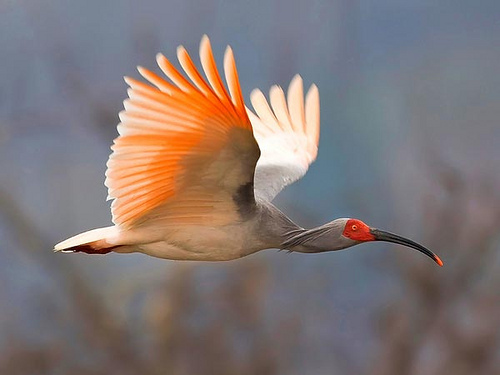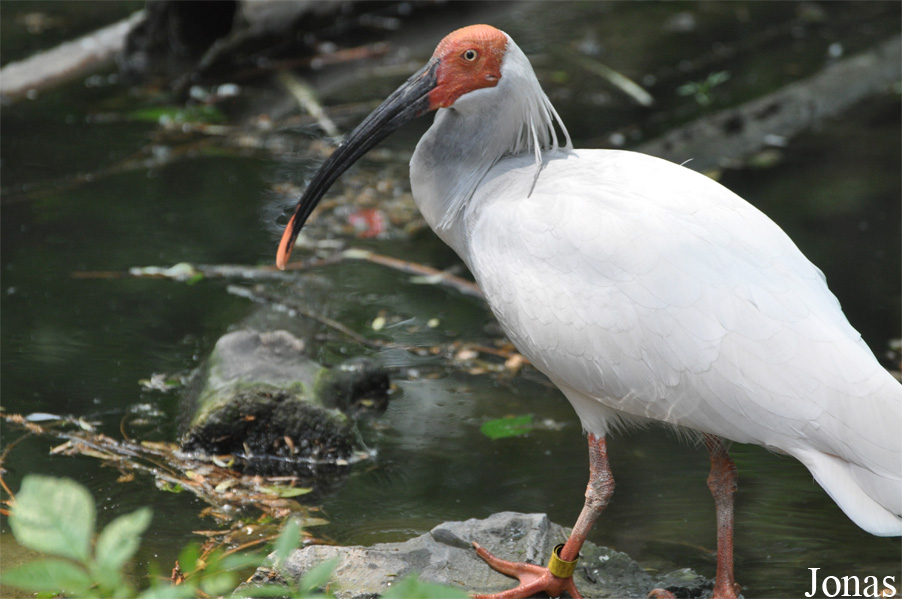
Nipponia nippon
SUBFAMILY
Threskiornithinae
TAXONOMY
Ibis nippon Temminck, 1835, Japan. Monotypic.
OTHER COMMON NAMES
English: Japanese crested ibis, crested ibis; French: Ibis nippon;
German: Nipponibis; Spanish: Ibis Nipуn.
PHYSICAL CHARACTERISTICS
22–31 in (56–79 cm); 2.2 lbs (1,000 g). Mostly white, this ibis
has orange-brown flight and tail feathers, a bare, orange-red
face, and a crest of long, white feathers extending backward
from the head. Legs are orange-red.
DISTRIBUTION
Before the twentieth century, this species bred in large areas of
eastern China and Japan, and existed in Korea until the 1940s.
Today, the remaining birds live in a reserve in southern
Shaanxi, a province in east-central China.
HABITAT
Forested hills and adjoining wetlands, rice paddies, lakes, and
ponds.
BEHAVIOR
The Japanese ibis does not migrate. The known birds only
travel from their breeding ground to foraging areas and back.
FEEDING ECOLOGY AND DIET
Frogs, newts, fish, crustaceans, and insects.
REPRODUCTIVE BIOLOGY
Breeding takes place in a colonial setting. The nest is a simple
platform of sticks built in a tree. Three eggs are normally laid.
CONSERVATION STATUS
Endangered and on the edge of extinction, with a total of 48
individuals recorded in 2001. In recent years, the sole wild
colony has never totaled higher than 22 birds, although an average
of five fledglings per year was recorded over the last
decade. One bird per year is taken from the wild to add to a
captive breeding project in the Beijing Zoo, where several birds
have been hatched and raised successfully. Hunting (once
widespread, although now illegal), habitat destruction, and pesticides
are blamed for the species’ decline.
SIGNIFICANCE TO HUMANS
Revered as a Japanese national symbol. When only two were
left in Japan, in 1994, a pair was brought from China for
breeding, but the attempt was unsuccessful. The last Japanese
ibis in Japan died in 1995 at the estimated age of 26.
Photo Gallery of - Japanese ibis




 Animalia Life
Animalia Life